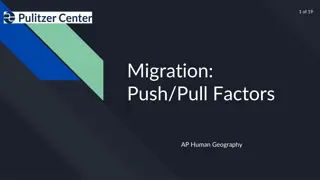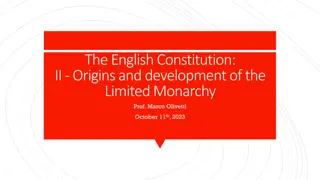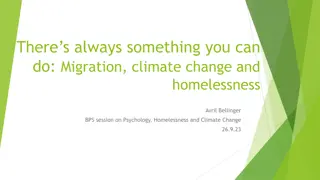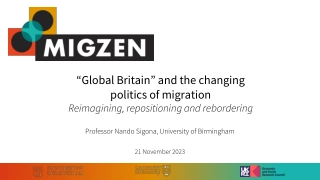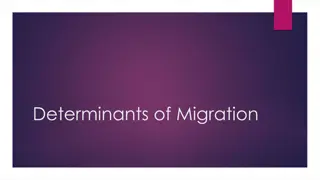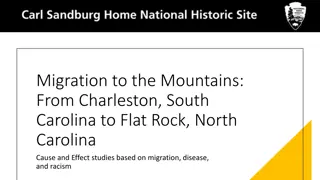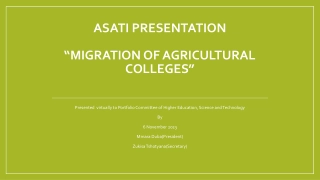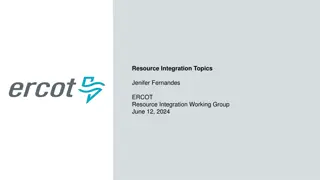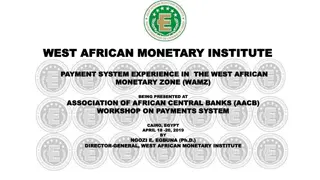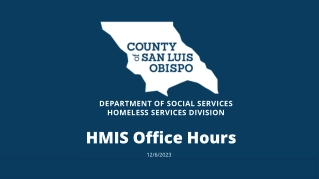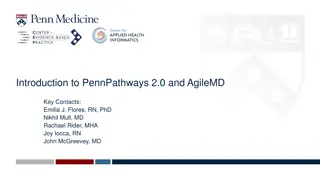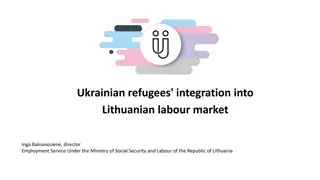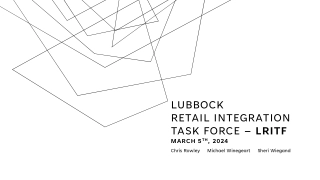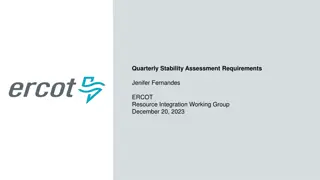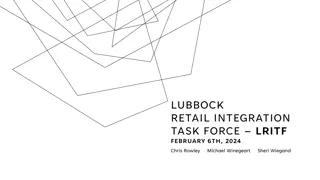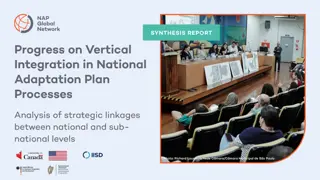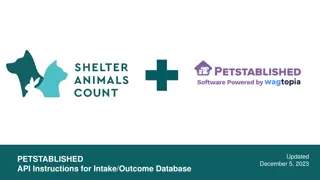The Anglo-Saxon Period: Migration and Integration in Angleland
The Anglo-Saxon period (c. 449-1066) in England saw a dynamic interplay of various cultures, including the Celts, Romans, and Germanic tribes. The arrival of Angles, Saxons, Jutes, and others led to the formation of Angleland (England), with societal structures based on heroic ideals like courage and loyalty. The Venerable Bede's views on the displacement of Britons highlighted the complex process of integration and migration during this transformative era.
Download Presentation
Please find below an Image/Link to download the presentation.
The content on the website is provided AS IS for your information and personal use only. It may not be sold, licensed, or shared on other websites without obtaining consent from the author. Download presentation by click this link. If you encounter any issues during the download, it is possible that the publisher has removed the file from their server.
Presentation Transcript
THE ANGLO-SAXON PERIOD (c. 449-1066) Anglo-Saxon England, Old English, & Beowulf
Earlier Inhabitants: the Celts Before the Romans or the Anglo-Saxons, the British Isles & Ireland were inhabited by the Celtic peoples. In the north, the Picts were known for their fierceness and their elaborate tattoos. The Scots and Irish were in the western lands and isles. Pictish warrior woman There was a lot of moving and mingling among early Picts, Scots, and Irish. It is difficult to sort out where each culture was at a given time and whether Pictish culture was simply integrated into the Scots. All we know of the Picts comes from the Romans, and that isn t much. The Britons are today called Welsh. The Celtic peoples are related by language and by their higher proportion of redheads. Celtic languages are all grouped under the term Gaelic. The British banned these languages well into the 1950s.
Roman Britain From c. 43-449 a large area of the British Isles was ruled by the Roman Empire. When Rome was threatened, the Romans departed, leaving behind structures such as these Roman baths (Bath, England). Germanic tribes (Angles, Saxons, Jutes, Frisians) from the mainland began to move in. Some Britons moved toward the West of England, and some ended up in Brittany, France
Invasion or Migration? As the Romans departed, Jutes began to arrive from the peninsula of Jutland in Denmark. Angles & Saxons from the German coast soon followed, along with Frisians (Dutch) and others from the mainland. In the past, most historical accounts used the word invasion to describe the arrival of Angles, Saxons, Jutes, Frisians, and others in England and Scotland. Today, many see this movement as a migration that sometimes involved conquest. Viking raids and settlements were common northern areas across the isles in 700-900. Christian monks had a prayer: Lord, save us from the fury of the Northmen.
The Venerable Bede (672-735) promoted the idea that the Anglo- Saxons and Jutes had displaced the Britons in an invasion. The reality is more complex and involves the gradual integration of native Britons with several groups coming from the East. Many Britons stayed and mingled with the newcomers.
ANGLELAND Anglo-Saxon England was called Angleland (England). The people mostly called themselves Englisc. The term Anglo-Saxon appears in the 700s and was used by continental Europeans. J.R.R. Tolkien, a scholar of ancient languages, translated and championed Beowulf before writing The Hobbit and The Lord of the Rings. Language - Old English (Anglo-Saxon German there is some dispute about this) Heroic Ideals - Courage, loyalty, valor, courtesy, generosity Societal Structure - Family-> Clan-> Tribe-> Kingdom. Art - a high regard for beauty & fine ornamentation Storytelling - poets called scops (pronounced shops ) sang oral tales about the gods and heroes for entertainment and shared history. The Celtic peoples called theirs bards Mead Hall - meeting place and palace of the king. Named for an alcoholic drink of fermented honey (mead). Reconstructed Mead Hall Theoden s Hall, Lord of the Rings: The Two Towers (2002)
The Setting of Beowulf Pay attention to these groups/nations you will find references to them in the poem Note the geographical locations of the Danes and the Geats. These are the two main groups/nations Beowulf is about. The poem opens with the line of Danish kings. Hrothgar is a Dane. Beowulf is a Geat. The map on the left is a close-up highlighting locations from the poem. The modern map is for comparison.
Artifacts found in a ship burial at Sutton Hoo (Suffolk, England) in 1939 Shows the Anglo-Saxons love for fine ornamentation and art. This culture is very similar to the one described in Beowulf, which opens with the story of a great king (Shield Sheafson) and his lavish ship burial. This discovery further legitimized the study of Beowulf as more than just an example of Old English. The helmet is like one described in the poem. The artifacts date from the 600s A.D.
The Clash of Pagan vs. Christian is central to Beowulf Pagan Beliefs of the Anglo-Saxons Fate (Old English: wyrd ) an irresistible force that determines human destiny: controlled by 3 goddesses called Norns (similar to the Fates of Greek mythology) Gods of the Anglo-Saxons were variants of the Norse gods: (Odin/Woden, Thor/Thunor, Loki, Friga/Freya, etc. Great admiration for heroic warriors & their great deeds Life s Goal win fame and lasting glory Pessimistic worldview: life is difficult defeat & disaster can come at any time Christian conversion of Anglo-Saxons begins in the 500 s AD. By the time Beowulf was written down (c. 1000 AD), conversion was complete Christians referred to non-Christians as Pagans and Heathens. Both words have negative connotations, meaning those who have primitive and backward belief systems that are inferior to Christianity & which consign one s soul to hell Sometimes Christ was compared to a warrior hero to entice Pagans to convert, as in the poem The Dream of the Rood (rood = cross). All pagan gods and creatures (trolls, fairies, etc.) were considered demons from the Christian hell. The monsters in Beowulf became not just evil after Christian conversion, they were satanic
Social Classes in Anglo-Saxon Britain The Nobility (king & his family) Thanes -Leaders of men, similar to knights -Loyal to a king Edward the Elder (899-924) Freemen -soldiers -Captured in raids & warfare -craftsmen -Some could own property & -farmers Enslaved Persons buy their freedom A freeman s home
Education & Religion In monasteries across England, Christian priests and monks were among the few literate people. Some were scribes, making copies of scripture and other books by hand and writing notes & comments. By c. 550 the native Britons, Irish, and Scots had been converted to Christianity. The Anglo-Saxons proved far more difficult to convert. Church officials began with kings. Saint Bede, English monk and historian (672-735)
Anglo-Saxon Runes Early Scandinavian holy men used runes to carve inscriptions on ceremonial stones or as a means of identifying valued items. Runes were believed to have magical powers. An early Anglo-Saxon example can be found along the sides of the Ruthwell Cross (right). The text is The Dream of the Rood, an Anglo-Saxon poem that portrays Christ as a warrior-hero battling sin on the cross. The Ruthwell Cross dates from the early 700s.
A Very Short First Page of Beowulf History of English Old English (c. 449-1100) (Anglo-Saxon German) Example: Beowulf Middle English (c. 1100-1500) (the king & nobility spoke French) Example: The Canterbury Tales Early Modern English (c. 1500-1688) Example: Shakespeare s plays Modern English (c. 1688-present) Note: Latin was the language of the Church from the earliest missionaries of Roman Britain until the Reformation in the early 1500 s. The English government communicated with other European nations in Latin well into the 1700 s.
The opening lines of Beowulf in Old English explained These two letters sound like th (thorn) (eth) Beowulf (lines 1-11)
Five Features of Anglo-Saxon Poetry 1. Kenning - the use of phrases or compounds to describe a person, place, or thing whale-road (the sea); shepherd of evil (Grendel); battle sweat (blood); sleep of the sword (death in battle) (modern examples: gas-guzzler, fender-bender) 2. Alliteration - repeated beginning consonant sounds. silently sliding, grim and greedy down in the darkness, the monster stirred 3. Caesura - the verse is divided into two halves separated by a pause (caesura) in the line s rhythm. This is usually dispensed with in translations. The fortunes of war favored Hrothgar (64). 4. Non-rhyming - no end rhymes (but some internal rhymes) 5. Enjambed lines - (not end-stopped) Bragi: Norse god of poetry & music Example: The hero arose, surrounded closely by his powerful thanes. A party remained under his orders to keep watch on the arms (399-401).
Present-day Influences of Anglo-Saxon Culture & Language: Tuesday = Tiw s day (aka Tyr, god of war) Wednesday = Woden s day (aka Odin: father god) Thursday = Thor s day (aka Thunor, god of thunder) Friday = Friga s day (wife of Odin; goddess of love, fertility, home) Monday (M nand g) was translated from the Latin dies lunae (day of the moon) Saturday and Sunday are named for Roman gods: Saturn and the Sun (Sol Invictus) Tyr/Tiw Odin/Woden Thor/Thunor Friga/Freya
The Author/Scribes of Beowulf (c. 1000 A. D.) Original poet(s): unknown Scandinavian or Anglo-Saxon storyteller(s) from 500-700 A.D. The settings are Denmark & Sweden The only surviving manuscript was written down by 2 scribes who were probably Christian monks. The changed handwriting occurs at lines 1939-40 Who first wrote down the old oral tale? No one knows. He was certainly familiar with classical and biblical literature, and he was a well-educated Christian The writer uses the pagan oral tale to promote Christianity, but also because he clearly admires the story. He was a fine poet in his own right
Written Manuscript The action of the poem dates from 500-700 A.D. and is set in Denmark and Geatland (southern Sweden) -Told orally by scops for 3-5 centuries -Written down in Old English c. 1000 The manuscript was preserved in a monastery for hundreds of years until the early 1500 s; Henry VIII ordered the closure of monasteries when the Church of England broke with the Pope and became Protestant. Much of the contents of monasteries An Anglo-Saxon scop (aka bard ) was destroyed sings stories of gods and heroes for his king and thanes
Sir Robert Cotton - Preserved the single surviving manuscript of Beowulf in his personal library in Conington, England 1731 - Fire nearly destroyed the manuscript, which was later donated to the British Museum Myth or History - Within the poem, no distinction is made between myth and history. Beowulf cannot accurately be described as completely fiction or fact. Most characters seem to be based on actual persons. Beowulf himself is invented. Beowulf is the first great literary work in the English language
The Norman Conquest Angleland lasted until 1066 when the Normans invaded, led by William the Conqueror. Norman means Northmen. The Normans were originally Danes who moved to northern France before invading England. With the addition of many French and Latin words, the English language began to move into its second phase, Middle English.


